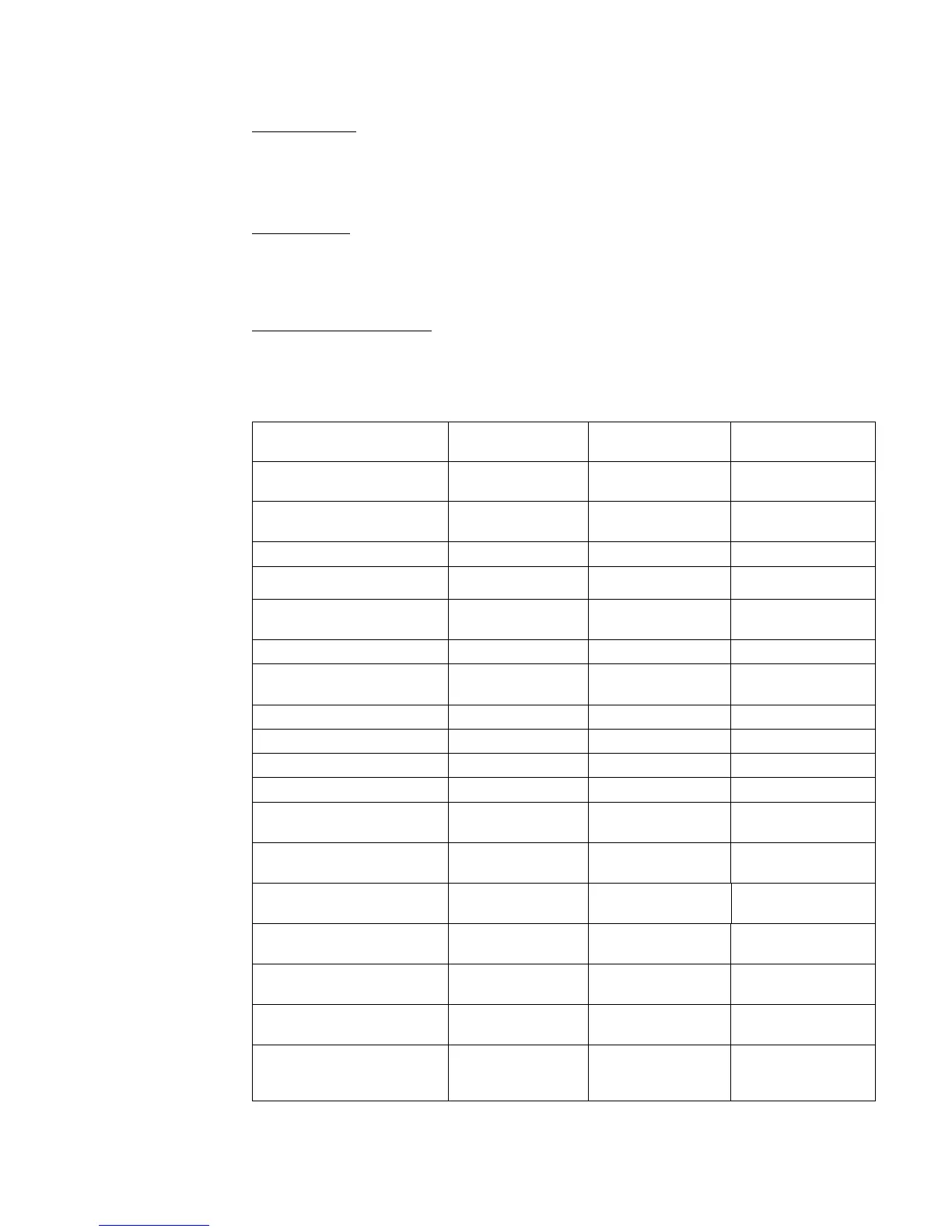Section 9 - RS232
Serial Connector — A 9-pin D-connector is provided on the back panel of the Chiller for RS232 data
communication. A serial cable that uses only the following pins should be used to connect the Chiller
to the computer:
Pin #2 — data read (data from computer)
Pin #3 — data transmit (data to computer)
Pin #5 — Signal ground
RS232 Protocol — The Controller uses the following RS232 protocol:
Data bits — 8
Parity — None
Stop bits — 1
Flow control — None
Baud rate — Selectable (Chiller and PC baud rates must match).
Communications Commands — Commands must be entered in the exact format shown. Do not send a
[LF] (line feed) after the [CR] (character return). Be sure to follow character case exactly. A response
followed by an exclamation point (!) indicates that a command was executed correctly. A question mark
(?) indicates that the Chiller could not execute the command (either because it was in an improper
format or the values were outside the allowable range). A response must be received from the Chiller
before another command can be sent. All responses are terminated with a single [CR].
Command Description Command Format Values Return Message
Set Commend Echo SEi[CR]
Echo: i = 1
No Echo: i = 0
![CR]
Set On / Off SOi[CR]
On: i = 1
Off: i = 0
![CR]
Set Set Point SSxxx[CR] x = ASCII digit ![CR]
Read Set Point Temperature RS[CR]
+xxx.x[CR] or
-xxx.x[CR]
Read Temperature RT[CR]
+xxx.x[CR] or
-xxx.x[CR]]
Read Temperature Units RU[CR] C or F C[CR] or F[CR]
Read Status RW[CR]
1 = Run
0 = Standby
1[CR] or 0[CR]
Read Pressure in PSI RP[CR] +nnn.n[CR]
Read Pressure in kPa RK[CR] +nnn.n[CR]
Read Flow in GPM RG[CR] +nnn.n[CR]
Read Flow in LPM RL[CR] +nnn.n[CR]
Read Remote Control
Voltage
RC[CR] +nnn.n[CR]
Read Compressor
Discharge Temperature (°C)
RH[CR]
+xxx.x[CR] or
-xxx.x[CR]]
Read Remote Probe
Temperature
RR[CR]
+xxx.x[CR] or
-xxx.x[CR]]
Read Ambient temperature
on PCB
RA[CR]
+xxx.x[CR] or
-xxx.x[CR]]
Read internal temperature R1[CR]
+xxx.x[CR] or
-xxx.x[CR]]
Read external temperature R2[CR]
+xxx.x[CR] or
-xxx.x[CR]]
Read fault status
(see Section 4.8 for fault
message codes)
RF[CR]
00 = System OK
18 = Standby mode
02 – 17 = Fault
![CR]
